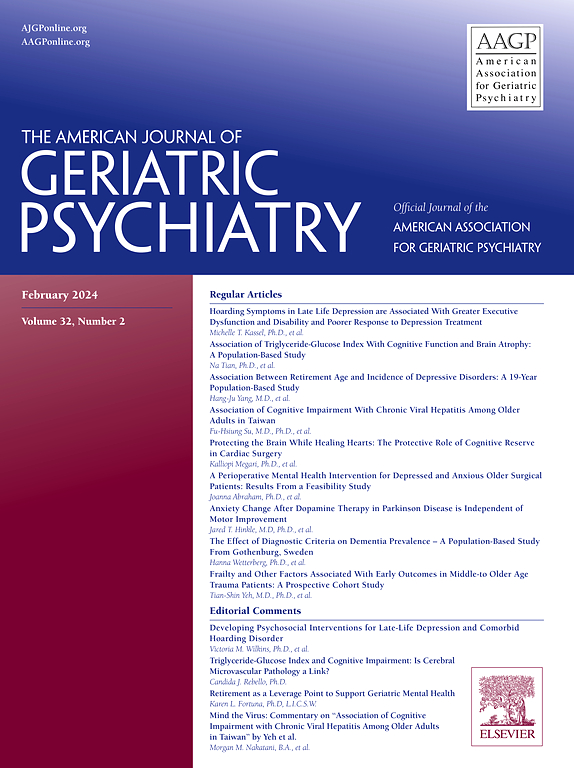Problem Adaptation Therapy for Older Adults with Chronic Pain and Negative Emotions in Primary Care (PATH-Pain): A Randomized Clinical Trial
IF 4.4
2区 医学
Q1 GERIATRICS & GERONTOLOGY
引用次数: 0
Abstract
Objective
To test the efficacy of Problem Adaptation Therapy for Pain (PATH-Pain) versus Usual Care (UC) in reducing pain-related disability, pain intensity, and depression among older adults with chronic pain and negative emotions.
Design
RCT assessing the between-group differences during the acute (0–10 weeks) and follow-up (weeks 11–24) phase of treatment.
Setting
A geriatrics primary care site.
Participants
100 participants (80 % females, Mean Age = 75.5) with chronic pain, negative emotions, and varying cognition (56 % had cognitive impairment) were randomly assigned to PATH-Pain (N = 49) or UC (N = 51).
Interventions
PATH-Pain is a collaborative program which includes a psychosocial intervention designed to improve emotion regulation. UC participants received a booklet that described evidence-based self-management pain strategies.
Measurements
Primary outcomes: Pain-related disability (Modified Roland-Morris Disability Questionnaire), and pain intensity. Secondary outcomes: Depression (Montgomery-Asberg Depression Rating Scale), emotion regulation (Emotion Regulation Questionnaire), and treatment satisfaction (Client Satisfaction Questionnaire).
Results
During acute treatment (by Week 10), PATH-Pain vs. UC participants showed a significant decrease in pain-related disability [contrast mean difference (CMD) = −1.96, P = 0.02), CI [−0.47, −3.44]] and in depression severity (CMD = −2.50, P = 0.03, CI [−.0.23, −4.76]), but not in pain intensity. PATH-Pain (vs. UC) participants also demonstrated a significant improvement in expressive suppression, an aspect of emotion regulation (CMD = 2.120, P = 0.010, CI [.085, 4.155]). During follow-up (Week 11 to 24), there were no significant between-group differences in pain-related disability, pain intensity, or depression severity.
Conclusions
This primarycarebased study demonstrates the short-term efficacy of PATH-Pain versus UC in reducing pain-related disability and depression in older adults with comorbid chronic pain and negative emotions, as well as varying degrees of cognitive functioning.
求助全文
约1分钟内获得全文
求助全文
来源期刊
CiteScore
13.00
自引率
4.20%
发文量
381
审稿时长
26 days
期刊介绍:
The American Journal of Geriatric Psychiatry is the leading source of information in the rapidly evolving field of geriatric psychiatry. This esteemed journal features peer-reviewed articles covering topics such as the diagnosis and classification of psychiatric disorders in older adults, epidemiological and biological correlates of mental health in the elderly, and psychopharmacology and other somatic treatments. Published twelve times a year, the journal serves as an authoritative resource for professionals in the field.

 求助内容:
求助内容: 应助结果提醒方式:
应助结果提醒方式:


